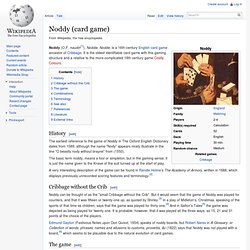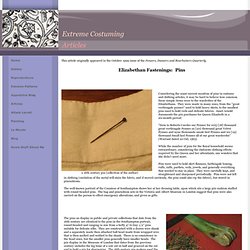

Making your own medieval dress pins. Dress pins are a must have for the person wearing veils and wimples and so.

But they are surprisingly expensive for what they are. I do understand why but still, I am a student and sometimes it is hard on the wallet to pay around four to five Euro for one single dress pin. A metal working friend of mine said “well do them yourself, they are really not that hard to make”. But I did not really believe her, nothing is hard when you already have the skills of the material. But when cleaning my worktable I found a piece of silver wire I bought a few year ago to wire wrap some jewellery and I thought that I can try it anyway. But really, they ARE NOT that hard to make. A popular type of pin heads are the wire wrap and there are a lot of extant medieval pins found with this type of heads. I started with a piece of wire, it is quite soft at the moment but don’t worry, we will harden it later. Using a round nose pliers I started to make the wire wrap. Keep twisting the loose tail around. Like this: GOTHIC GREEN OAK. Playing cards were introduced into Europe in the late 14thC and became a gaming device of such seemingly endless adaptability that they permeated every level of society from the lowest tavern to the Royal Courts of Europe for many hundreds of years.

This book provides clear explanations for the rules of over 45 period card games from the late medieval period through to the Napoleonic era. 67 pages. Price £7 + £2 postage Period Card Games book with either deck of cards £ 11.25 + £3 postage Early playing cards dating to the 15th C are rare and the decks that have survived are fragmentary. Black Letter and Gothic Green Oak have collaborated in studying playing cards of this period, looking at incomplete decks and fragmentary cards combined with illustrations of the same artistic style and date to produce a complete 52 card French suited deck. The pip cards follow patterns known to the 15th C and later though many other patterns, including those similar to those used today were also used. MoEML. Noddy (card game) Noddy (O.F. naudin[1]), Noddie, Nodde, is a 16th-century English card game ancestor of Cribbage.

It is the oldest identifiable card game with this gaming structure and a relative to the more-complicated 18th century game Costly Colours. The earliest reference to the game of Noddy in The Oxford English Dictionary dates from 1589, although the name "Nody" appears nicely illustrate in the line "O beastly nody without brayne" from (1550). The basic term noddy, means a fool or simpleton, but in the gaming sense, it is just the name given to the Knave of the suit turned up at the start of play. A very interesting description of the game can be found in Randle Holme's The Academy of Armory, written in 1688, which displays previously unrecorded scoring features and terminology.[2] Katerina.purplefiles.net/DOCO/Accessories.pdf. Wp-content/uploads/2012/02/Blackwork-Embroidery-Booklet-v2b.pdf. Extreme Costuming. Considering the scant current mention of pins in costume and clothing articles, it may be hard to believe how common these simple items were to the wardrobes of the Elizabethans.

They were made in many sizes, from the "great verthingale pynnes" used to hold heavy skirts, to the smallest pins used to hold veils and delicate fabrics. Janet Arnold documents the pin purchases for Queen Elizabeth in a six-month period: "Item to Roberts Careles our Pynner for xviij [18] thousand great verthingale Pynnes xx [20] thowsand great Velvet Pynnes and nyne thowsande smale hed Pynnes and xix [19] thowsand Small hed Pynnes all of our great warderobe" (Warrant dated 20 Oct, 1565) While the number of pins for the Royal household seems extraordinary, considering the elaborate clothing effects required by the Queen and her attendants, one wonders that she didn't need more.
Medieval and Tudor Christmas Courts. By 'The Amateur Historians' Sarah Valente Kettler & Carole Trimble A.A.

Milne's popular children's poem,"King John", portrays the friendless king on the eve of a lonely Christmas, reduced to displaying tattered greeting cards from seasons past and wondering if, alas, he might count on receiving even one measly present this year. A fitting way for one of history's most villainous monarchs to spend the holidays . . . but historically, highly inaccurate. If there was one time of year that an English sovereign could count on being surrounded with all the trimmings and trappings of "fondness" and "friendship" - however forced they might be - it was during the Twelve Days of Christmas, which stretched from December 25 through Epiphany (or Twelfth Night) on January 6. Goldwork & Silk Tudor-Style Rose Tutorials – Index. TudorHistory.org.
French Hoods. Sweet Bags. Blackwork. Garb. Elizabethan. Primary & Secondary Sources.